Buckden Palace & the Most Obstinate Woman That May Be
To Charles Brandon, Katherine of Aragon was simply ‘the most obstinate woman that may be’. Having been discarded by her second husband, Henry VIII, she was cast into exile, being moved from one property to another, understandably much to Katherine’s chagrin. The penultimate of these was Buckden Palace on the edge of the Cambridgeshire fens. It was the scene of one of the fiercest and most public fights of Katherine’s sorry tale.
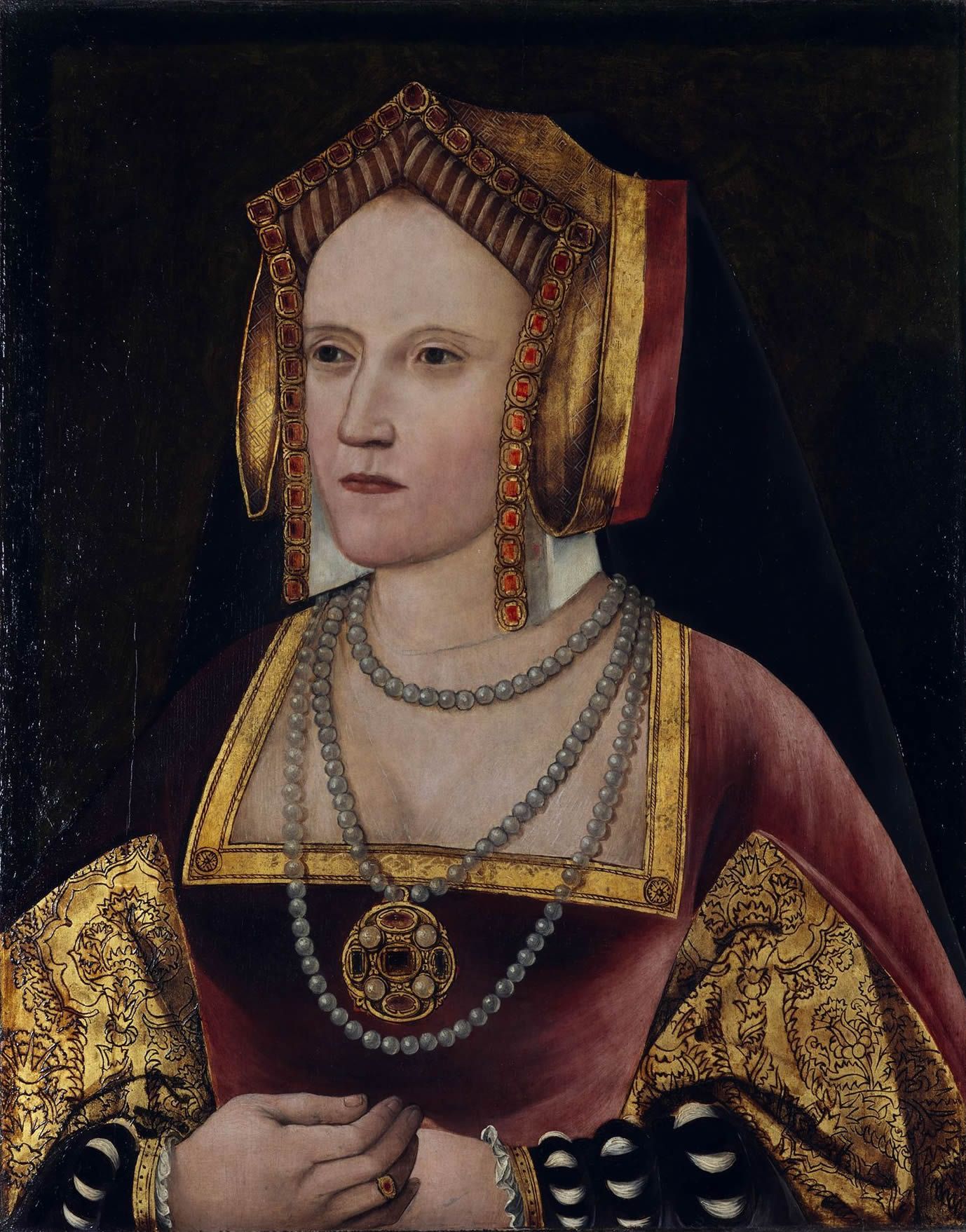
Whilst this month, we have revelled in Katherine’s state entry into London before her wedding and followed her up the aisle of Old St Paul’s amidst great rejoicing, now we revisit her and see how the wheel of fate has turned…
A Royal Delegation Arrives at Buckden Palace
The year is 1533. A sharp frost gradually gives way to the feeble warmth of the winter’s sun. From a distance, villagers watch as a handful of elegant gentlemen, clad in opulent fur and fine clothes, ride their mounts across a two-span, brick bridge. The bridge traverses a wide moat that connects the outer gatehouse of Buckden Palace to the inner courtyard.

On the other side of that bridge and out of sight, the forty-eight-year-old Katherine of Aragon looks down on men arriving below the window of her privy chamber. She sees the familiar figure of the Duke of Suffolk as he dismounts from his horse. Unaware that he is being watched, Charles Brandon secretly wishes some calamity had befallen him en route from London, for he has little appetite to carry out the orders entrusted to him by the king; the Duke has been ‘commissioned to bring the queen by force to a house surrounded with deep water and marshes, which is…the most unhealthy and pestilential house in England.’ (Described as such by Chapuys in a letter dated 23 December 1533). Ahead lies one of the most well-documented and theatrical episodes in Katherine’s life.
By this time, the king had cast aside his wife of over twenty years and taken the vivacious and controversial Anne Boleyn as his bride and queen. Henry had not seen his first wife since the summer of 1531, when he had headed off on summer progress with Anne, leaving Katherine behind at Windsor Castle. After being removed from Windsor to The More in Hertfordshire, Katherine was subsequently transferred first to Ampthill in Bedfordshire before being ordered to Buckden Palace (known in the sixteenth century as ‘Bugden’) in midsummer 1533.
Records of letters and gifts sent to the Princess Dowager in The Letters and Papers of Henry VIII (dated 15 December 1533) record that certainly by the 16 July, she had left Ampthill, travelling twenty-five miles in a north-easterly direction to her new lodgings. She would only reside there for ten months, but typical of Katherine, those months would not be without their fair share of high drama.
Buckden Palace: An Episcopal Palace on the Edge of the Fens
There had been a permanent episcopal residence of the Bishops of Lincoln at Buckden since the twelfth century. Sited adjacent to the Great North Road (today the A1), Buckden Palace proved a convenient stopping-off point between Lincoln and London; this was essential as many of its medieval bishops were involved with state affairs. Given Katherine’s plaintiff complaints about the unhealthy situation of Buckden Palace echoing across time, we might be tempted to think of her imprisoned in some dreary, outdated medieval fortress. The truth is that Buckden Palace, although near the dreaded damp of the Cambridgeshire Fens, was a fine residence with large parts having been constructed and redeveloped in the late fifteenth century, just fifty or so years earlier. According to British History Online, the original palace consisted of:
...an inner walled and moated enclosure, containing the main buildings of the house and entered by the Inner Gatehouse on the W[est] side, and an outer walled enclosure on the W[est], entered by the Outer Gate-house.

The outer gateway was connected to the inner one by way of the brick-built bridge described above. This indeed spanned a wide moat. After many, if not all, of the inner courtyard buildings, were burnt down in 1291, the great hall was almost immediately reconstructed. Emery’s Greater Medieval Houses of England and Wales, Volume II states that:
Probably then, rather than later, a detached chamber block and chapel were erected south of the hall, separated from it by a small garth or courtyard.
The palace was extended again two centuries later by Bishops Rotherham and Russell. As successive holders of the office, they built between them the lofty Tower House that came to contain the bishop’s principal private chambers, refurbished the great hall and built the inner and outer gatehouses. The chapel was also replaced by Russell’s successor at the turn of the sixteenth century. The key aforementioned buildings of the hall, chapel and great chamber were arranged around the (probably) cloistered garth to the north, east and south respectively; all the principal chambers were sited at first-floor level.
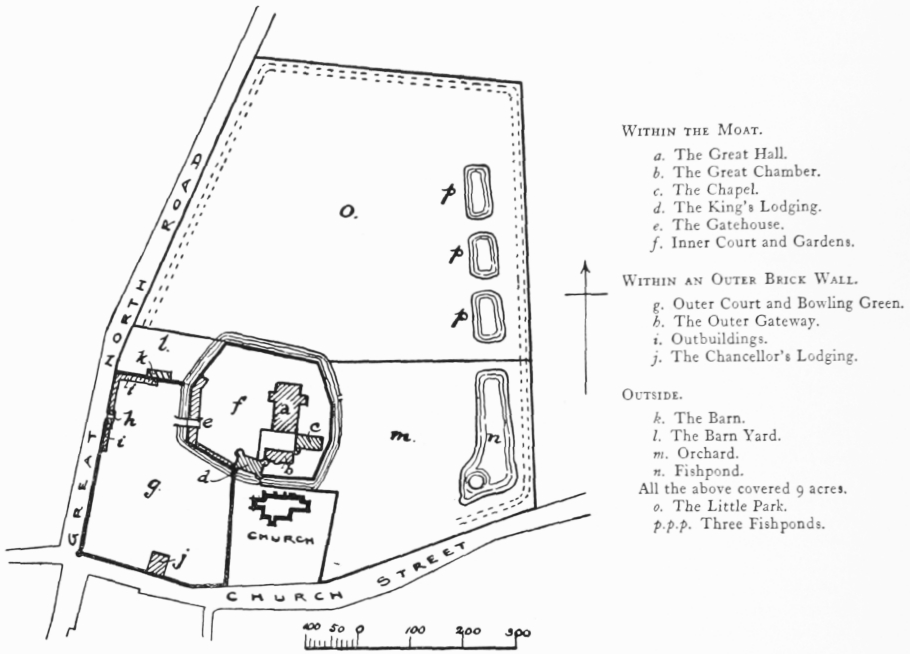
The Great Chamber at Buckden Palace: The Showdown Begins
On Wednesday last, after dinner, we declared your pleasure to the Princess Dowager in her great chamber before all the servants of the house.
On Friday, 19 December 1533, Suffolk put pen to paper. He wrote first to the King, then more bluntly to both Norfolk and Cromwell. In those missives, he recalled the tense encounter between himself and the newly titled ‘Princess Dowager’. The meeting had taken place just two days previously, in her ‘Great Chamber’ at Buckden. As the quill moved quickly across the parchment, Suffolk went on to describe Katherine’s response to the king’s insistence that she refrain from using the title ‘queen’ and that she was to remove herself to nearby Somersham:
She protested with open voice that she was your Queen, and would rather be hewn in pieces than depart from this assertion. She refuses the name of Princess Dowager, and resists her removal to Somersham because of her health; and for all the persuasions that could be made by us or lord Mountjoy, or Dymock, her almoner, who urged her to remove, however she might order herself in her cause, she refuses to take any person into her service sworn to her as Princess Dowager.

Unfortunately, the chamber where this audience took place is lost to time. Only its foundations remain in outline on the ground. Yet, due to the Commonwealth Survey of 1647, we know something of the appearance of the said building and its interior. Lying to the south of the garth, directly across from the great hall, it measured 49 feet by 23.5 feet. Embedded in the south wall was a large projecting fireplace. Opposite the high end of the chamber, a large oriel window with a stone canopy was inset into the east wall, with thirteenth and fifteenth-century windows built into the north and south walls, respectively.
According to Chapuys, Suffolk and the other commissioners stayed at Buckden for six days, pressuring Katherine and her household to submit. As the Princess Dowager always preferred such audiences to take place in the open, in front of witnesses, one assumes that much of this titanic struggle played out in this ‘Great Chamber’ – that is, with the documented exception of the events that unfolded on the final morning of Suffolk’s stay in Buckden.
As the Duke directed the packing up of the Dowager Princess’ household, Katherine raised the ante by barring herself in her privy chamber. What followed next likely took place in The Tower House.
The Tower House at Buckden: The Scene of Katherine’s Last Stand
The Tower House was a fine, three-storey building set above a half basement. As previously mentioned, it contained the bishop’s principal private apartments. As such, the rooms would have been the most luxurious in the palace and must have been used by Katherine for the same purposes during her tenure at Buckden (mainly since there are no other obvious contenders for the role within the palace complex). The internal arrangement of the rooms has been changed since the sixteenth century. At some point, the building was entirely gutted (leaving only a single chamber per floor), and the vaulting of the basement was removed. However, according to British History Online:
The principal floor had been occupied as the king’s dining room, the northern end cut off by a screen, the walls panelled and the ceiling supported upon heavy moulded beams with large carved bosses at the intersections—one of which had Bishop Russell’s rebus, a thrush or throstle with the motto ‘Verus celluy je sui,’ the other had the bishop’s arms. The upper stories were divided into several rooms (of which there were ten in total).

Notably, the original staircase survives in the north-east turret of the tower. Emery states that the stair is:
Complete with its stone handrail sunk into the wall and [with] internal evidence of a doorway from the great chamber midway between the [current] ground and first-floor level.
Given the contemporary accounts of Katherine’s ferocious encounter with the Duke of Suffolk in December 1533, it is quite plausible that it was through this door and up this staircase that the enraged Princess Dowager fled, only to lock herself into her chamber, refusing to yield to Suffolk’s threats or reasoning. As ever, it is the wily Ambassador Chapuys who has left behind an account of the encounter, with Charles Brandon resorting to addressing Katherine through a hole in the wall:
The said Commissioners [Suffolk, Sussex, Paulet and Sampson] stopped six days, as well to close the house as to see if the Queen, through the loss of her servants and their rough menaces, would change her purpose. But seeing that she was constant, they proceeded at length to load the baggage, and get a litter and horses in order to mount the Queen thereon. She had locked herself in her chamber since the morning, and when the Commissioners came to take her away, she told them through a hole in the wall that they must break down the doors if they wished to remove her.
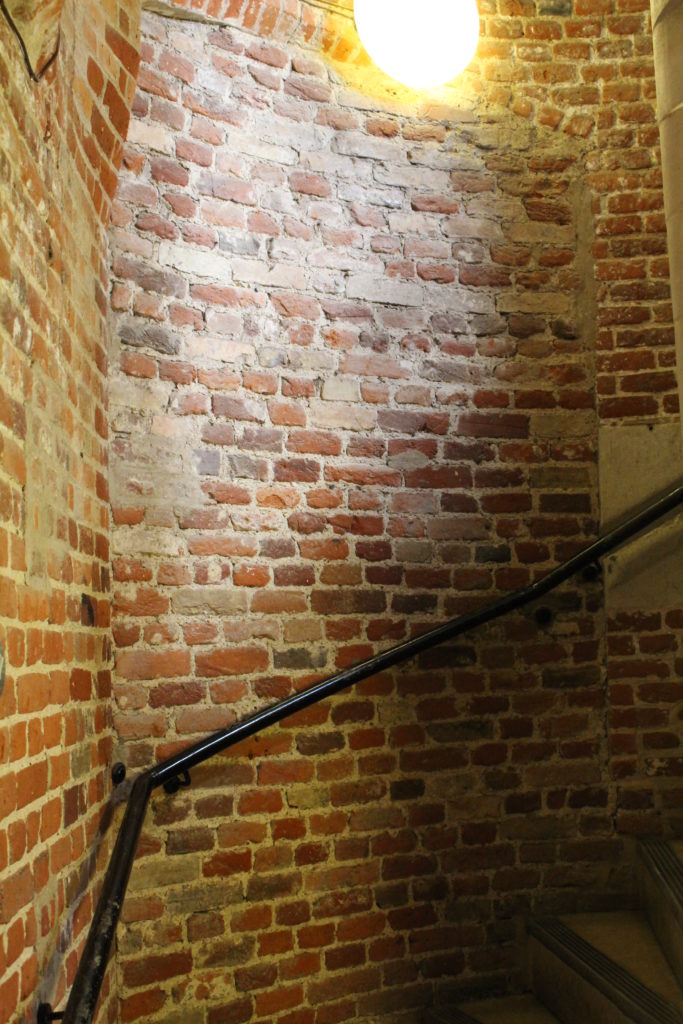
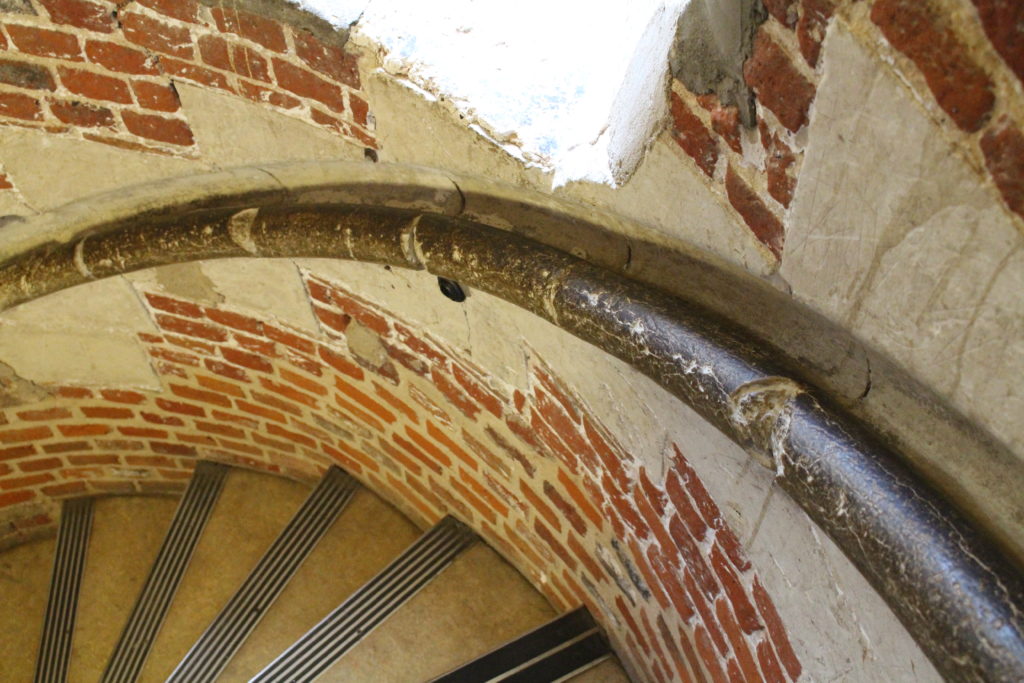
Katherine was not having any of it! The commissioners left without achieving their primary aim. The Dowager Princess remained at Buckden, albeit with a hugely reduced household. Many of her servants had refused to swear an oath to refrain from calling Katherine ‘queen’ as they considered that doing so would amount to perjury. As a result, a significant number were ‘driven away with great harshness’, and others were imprisoned. According to Chapuys in a letter dated 27 December 1533:
They debated on taking away her confessor, a Spanish bishop; but on the Queen saying that she never confessed, nor knew how to do it, except in Spanish, they left him, and said nothing to her physician and apothecary, who are Spaniards. They took away almost all her femmes de chambre ; but as the Queen affirmed she would not have any others, and would sleep in her clothes, and lock the gate herself, they returned two of them, but not those that the Queen wished. All her present servants, except the confessor, physician, and apothecary, who cannot speak English, have been sworn not to address her as Queen; and for this she has protested before the Commissioners that she will not regard them as her servants, but only her guards, as she is a prisoner.
A Life of Unhappy Obscurity
As the dust settled, Katherine’s life slipped back into unhappy obscurity. According to Nicolas Harpsfield, who wrote an account in defence of the validity of the marriage between Henry VIII and Katherine, she:
…spent her solitary life much in prayer, great alms and abstinence, and when she was not this way occupied, then was she, and her gentlewomen, working with their own hands something wrought in needlework, which she intended to the honour of God, to bestow on some of the churches.
This ‘solitary life much in prayer’ is also attested to in a retrospective account of Katherine, recorded by Henry Clifford from the recollections of Jane Dormer, later Duchess of Feria, a close friend and confidante of Mary I. We know that at some point, Katherine had taken The Third Order of St Francis; this order (which still exists today) allows married men and women to follow a rule ‘animated by the spirit of St Francis’ whilst living a lay existence. Because of this, she wore the habit of St Francis under her royal attire. In addition:
On every Sunday she received the Blessed Sacrament of the Altar. Most of the morning was spent in the church at holy service, and after dinner, she read the life of the saint of the day to her maids. And then she returned to the church.
According to Harpsfield, Katherine also:
…regained some of her cheerfulness and peace of mind at Bugden, where the country people began to love her exceedingly. They visited her frequently out of pure respect and she received the daily tokens of regard [with which] they showered her most sweetly and graciously.
Despite this greater peace of mind, by this time Katherine had been afflicted for some months by a malady that was first noted by Henry’s commissioners when they visited her at Ampthill the year before. The Princess Dowager had developed a troublesome cough and general frailty of health, which is commented upon here and there in the Letters and Papers of Henry VIII from this point until her death in early January 1536. It seems that the life force had gradually begun to depart from a soul weary of war. In May 1534, Katherine’s time at Buckden Palace ended, as she was moved to a place that would witness the final saga in her long and sorry tale – Kimbolton Castle.
Visitor Information
In 1962, the old Great North Road was diverted away from Buckden. This left the little village to rest peacefully, undisturbed by the increasingly heavy flow of traffic that now streams incessantly north-south along this ancient highway. However, we should bear in mind that in Katherine’s day, the old road ran straight past the entrance to the outer gatehouse of the palace.
In 1974, the somewhat ruinous site was gifted to a Catholic order, The Claretian Missionary. Together with the Friends of Buckden Palace, the surviving Tudor buildings were renovated in the 1980s. The site is now used as a conference and retreat centre.
Although almost all the Tudor interiors have disappeared, the extant sixteenth-century buildings have been secured for the foreseeable future. Today, the principal features of interest to the Tudor time traveller are the outer and inner gatehouse, the range of buildings to the right of the inner gatehouse (as approached across the now in-filled moat), and The Great Tower. This latter building once contained Katherine’s privy apartments. The great hall, chapel and Great Chamber are lost. However, as you tour the grounds, you will see their imprint outlined in the grass. The small stone-built chapel appended to the rear of the modern church was reconstructed to mark the site of the original chapel.
If you wish to visit, I would advise calling ahead to the main office of the Claretian Mission; although the grounds are open to the public, it feels pretty private. Alternatively, you can arrange a tour via The Friends of Bucken Tower for a small fee. In addition, there is usually an open day organised by the Friends in September each year. Check out their website for further details.
Finally, if you do visit Bucken, make sure you explore the adjoining churchyard and hunt for the tombs of Henry Brandon, 2nd Duke of Suffolk, and Charles Brandon, 3rd Duke of Suffolk. These two unfortunate brothers, sons of Charles Brandon and Katherine Willoughby, died on the same day of ‘sweating-sickness’ in July 1551.

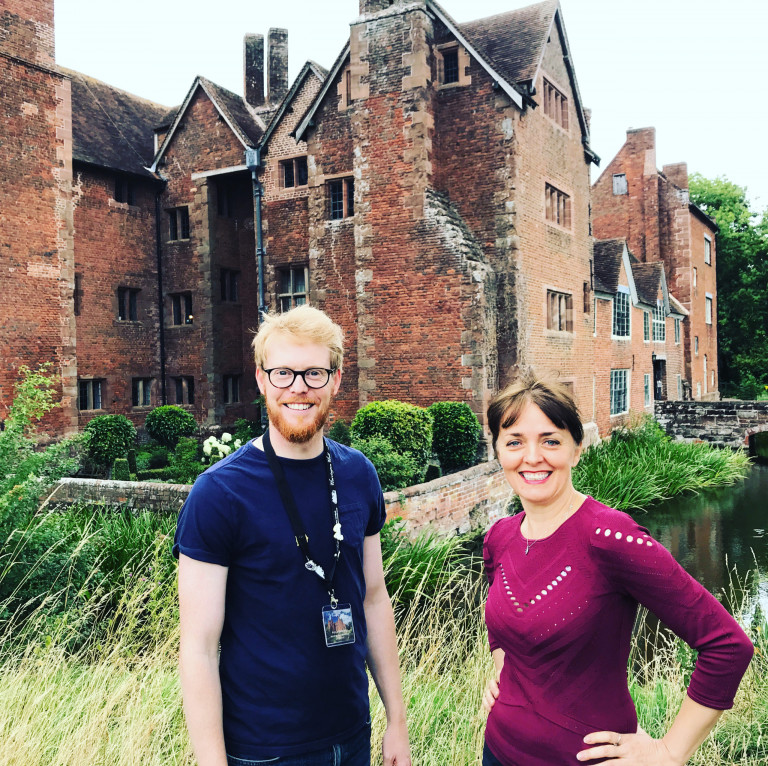
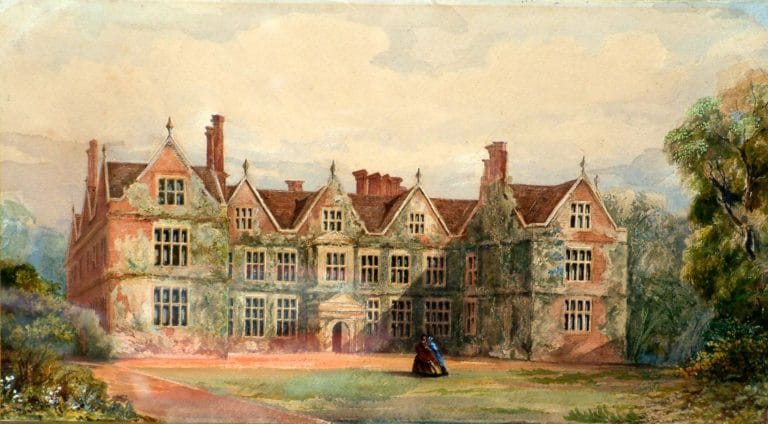
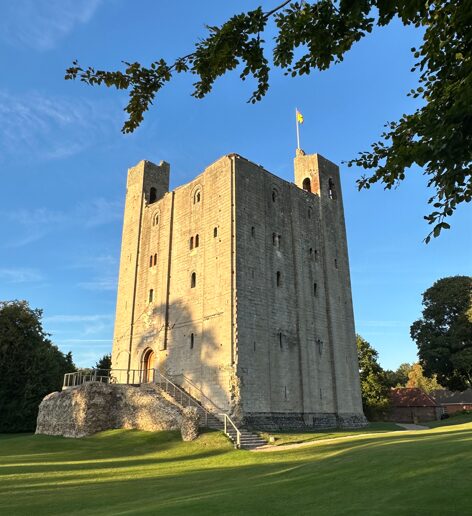
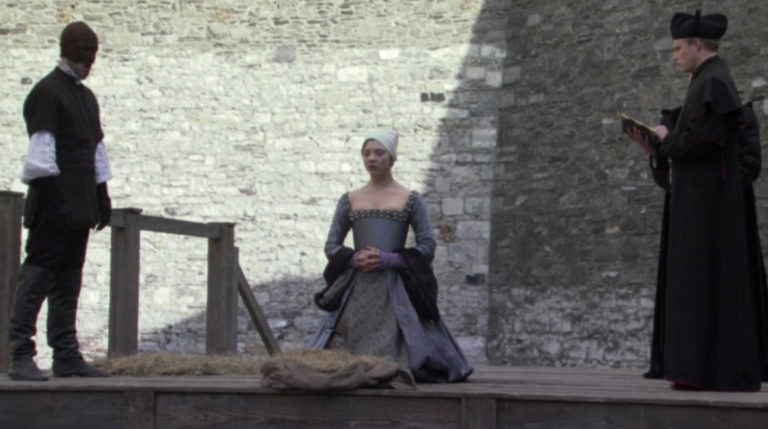
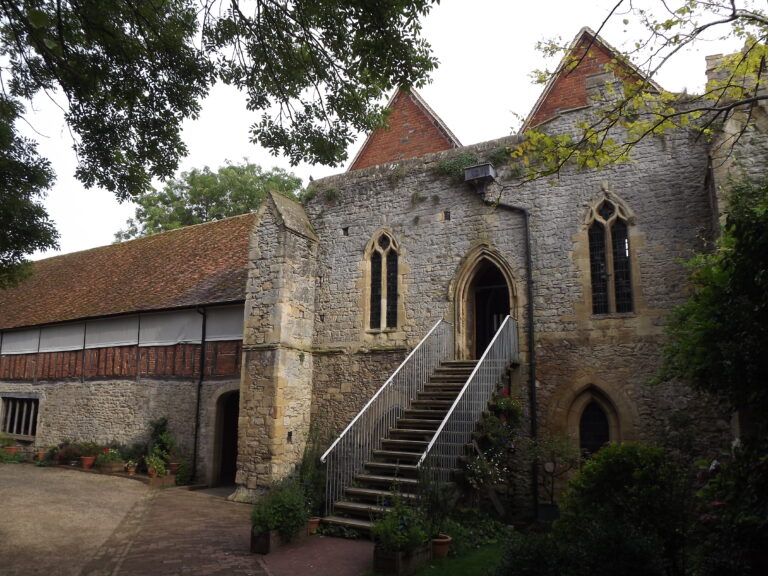
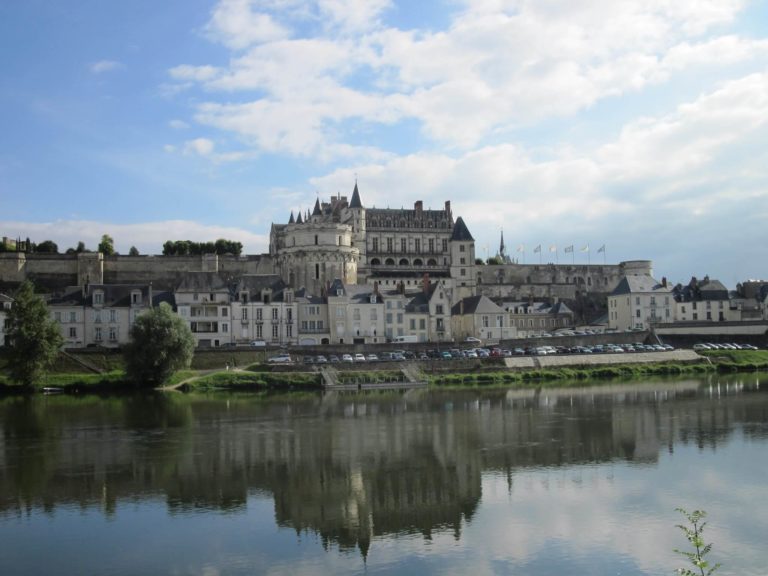
Great article! I grew up a few miles further up the Great North Road in Sawtry, but did not know this story. Thank-you!
You are most welcome!
I had no idea that parts of Buckden Palace remain to this day despite not living so very far from there. Will definitely keep a look out for future open days. What a lovely building!
Yes, well worth it!
How about the Buckden rebellion? when the villagers blocked the path of the kings representatives & soldiers? (complete with scythes & billhooks / implements of the time) not much is written about that.